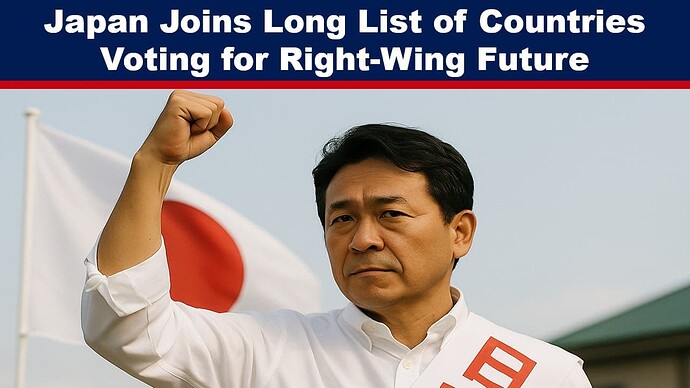Why Japan’s Shock Nationalist Turn Concerns the World
A major political realignment is taking place in the far east. Japan’s nationalist and populist voices are stepping into the spotlight after being confined to the sidelines for years — and its impact is reaching much further than its own borders.
What’s Going On in Japan?
Japan’s Liberal Democratic Party (LDP), led by Prime Minister Fumio Kishida, has just suffered a major electoral defeat. For the first time in a decade, the ruling coalition lost its grip on the upper house of parliament. But the bigger story is about who is filling the void.
The Sanseito party, a once-fringe nationalist movement, has surged in popularity and captured the attention of voters who find themselves fed up with the status quo. Starting off as a YouTube campaign during 2020, and focusing on grassroots efforts to build from the ground upwards, Sanseito has now secured over 20% of the vote in several key districts. Centred on themes of national pride, the party advocates for constitutional reform, a tougher stance on national defence, stronger economic independence, and a greater emphasis on preserving the country’s disappearing culture.
It’s no secret that Japan has been on poor economic form in the past few decades — we published a piece about this recently — and with almost non-existent growth, a shrinking population, and the general perception that cultural values are being eroded year by year, more people feel alienated from their country’s future. Sanseito’s rise reflects a growing number of voters looking not just for a shift in policy, but in foundational principles too.
Why Sanseito’s Message is Gaining Momentum
The party’s critics were quick to label Sanseito as a “far-right” movement, especially in international news. But for many of its supporters, this simplified characterisation misses the nuance. To them, it isn’t radical — it’s rational. Those backing Sanseito feel relief in finally having their voices heard regarding how quickly their country appears to be changing without anyone’s consent.
With this move, Japan looks to be joining a lengthening list of countries concerned about immigration, foreign ownership, and their own shrinking influence on the world stage. Supporters say that traditional parties have left the ordinary person’s questions on these topics unanswered, while underdelivering on their own key goals — promises of progress and prosperity have dwindled into soaring living costs, economic stagnation, and a lacking cultural identity.
Sanseito’s success is — at least in part — due to its ability to communicate outside the traditional boundaries of legacy media. Effectively utilising social media platforms like YouTube has allowed the party to access an audience that had grown fed up with, and felt ignored by, the usual voices and their outlets. Policy alone isn’t enough to cause a shift; they must actually be heard. Increasingly, voters appear willing to listen to voices that reflect their anxieties and ambitions rather than dismiss them.
Final Thought
Sanseito’s emergence is a sign of something deeper than just a political upset. It signals a recalibration of identities, priorities, and how people expect to be represented. As with many movements like this, the voices that feel they have been suppressed the longest, become the loudest.
Japan’s shift clearly represents that the people still believe in cultural pride, national interest, and self-determination, and not just as fringe values. Just as we’re seeing happen in other major countries around the globe, these values are finding their way back to the mainstream.
Whether this becomes a model for others, or a unique chapter in Japan’s political story, remains to be seen. But, undeniably, a shift is underway, and more countries may yet follow suit.
